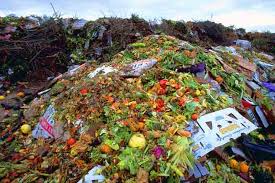A World of Waste: Hunger, Carbon and Consumption
Sep 13th, 2013 | By admin | Category: Food and Hunger/AgricultureBy Suzanne York, www.howmany.org
If you want to have an impact on reducing carbon emissions and the effects of climate change, look no further than your kitchen.
According to the Food and Agriculture Organization (FAO), every year the world wastes a third of all food for human consumption – nearly 1.3 billion tons – equal to 3.3 billion tons of carbon dioxide. To put it another way, if food wastes were a country, it would account for more carbon emissions than any country except China and the United States.
It comes down to overconsumption and inefficiency. In “The Food Wastage Footprint,” the FAO states that in the industrialized world, unsurprisingly, most waste is the result of consumers buying too much and throwing out what they don’t eat or want. In developing countries, it is primarily the result of inefficient farming and lack of proper storage facilities.It is estimated that the cost of all that wasted food is $750 billion a year.
José Graziano da Silva, Director-General of the FAO, said “We simply cannot allow one-third of all the food we produce to go to waste or be lost because of inappropriate practices, when 870 million people go hungry every day.”
Poverty, population growth, and rising consumption are all parts of food insecurity. The report’s authors note the following:
Food security is a major concern in large parts of the developing world. Food production must clearly increase significantly to meet the future demands of an increasing and more affluent world population. …In a world with limited natural resources (land, water, energy, fertilizer), and where cost-effective solutions are to be found to produce enough safe and nutritious food for all, reducing food losses should not be a forgotten priority.
One of the report’s key findings is that food that is produced but not eaten each year uses up a volume of water equivalent to the annual flow of Russia’s Volga River.
The FAO addressed some of what it calls world food wastage “hot-spots”:
- Wastage of cereals in Asia is a significant problem, with major impacts on carbon emissions and water and land use. Rice’s profile is particularly noticeable, given its high methane emissions combined with a large level of wastage.
- While meat wastage volumes in all world regions is comparatively low, the meat sector generates a substantial impact on the environment in terms of land occupation and carbon footprint, especially in high-income countries and Latin America, which in combination account for 80 percent of all meat wastage.
In industrialized countries, food waste can be reduced by raising awareness among food industries, retailers and consumers. One example of a successful voluntary initiative is Denmark’s Stop Wasting Food. This project “provides guidance to consumers on how to avoid wasting food by shopping according to daily needs of households, and promotes better household planning and shopping patterns in order to encourage a movement away from impulsive to rational food shopping and consumption patterns.”
The FAO also released a toolkit called “Reducing the Food Wastage Footprint,” which includes numerous ways to stop wasting so much food.
Sometimes it is the small and unglamorous efforts people can take that will make a difference. Just like choosing to go with a meatless diet one or two days a week can reduce carbon footprints, so can simply eating smaller portions, at least in wealthier nations.
It seems our parents and/or grandparents were right when many said: “be sure to clean off your plate, as there are starving people in [insert developing country].” Only this time, the fate of the planet hangs in the balance if we don’t clean our dinner plates, or put less on the plate.


